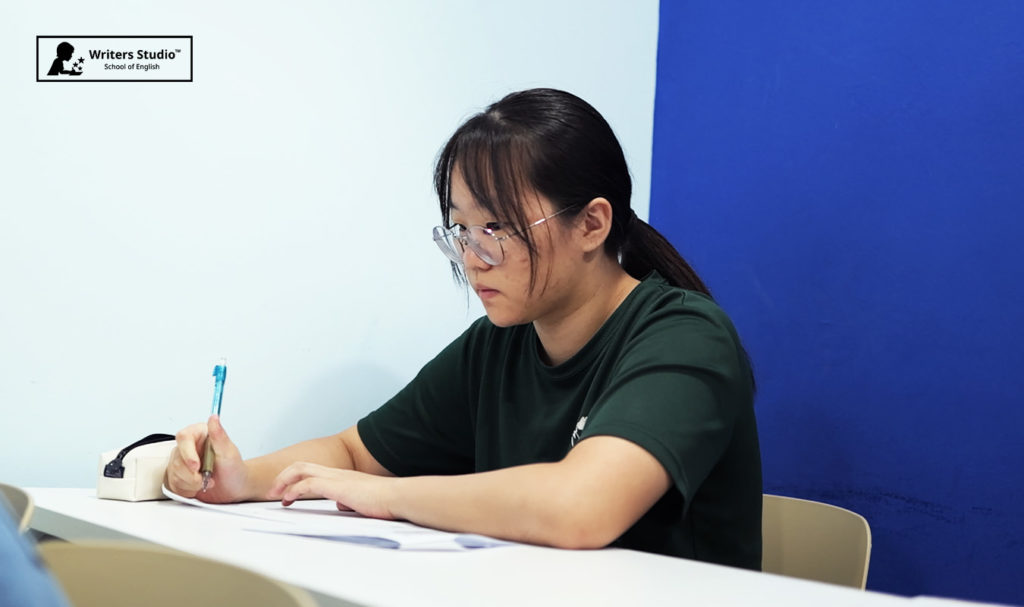
22 May 2024
O-Level English: How to Tackle the New Visual Text Comprehension
The English O-Level GCE Examination is often considered as one of the most, if not the most challenging subject, to score for. Over the years, the paper has evolved and grown to be more stringent with its requirement for distinctions.
For many students, the English O-Level Paper 2 component is calibrated such that only the best and most-prepared students can attain the elusive A1. English as a language, can be perceived as subjective, as there can be many different interpretations of its vocabulary. This can result in poorer than expected scores if students take the preparations for granted.
Furthermore, unlike Biology or Chemistry, students cannot simply memorise in order to score. Finally, some students may struggle with the English paper if it is not their first language or if they have difficulty with analysing complicated comprehension passages with hidden nuances.
In order to attain A1 for English for GCE O-Levels, students must excel at every single component at the Cambridge standard. This means that any doubts should be clarified before entering the examination hall, along with reducing the chances of making undesired mistakes to a minimum. Especially for the new visual text component, we see good opportunities at achieving a high score – this section will help an exam candidate score better on an overall basis, if the strategies are used correctly.
Here are useful tips on how to succeed in scoring for the visual text section.

1. Analyse the Passage and Questions Carefully
Before attempting the visual text, make sure to read the passage carefully. You will need to identify the audience, purpose and context of the visual text provided. Then, move on to the questions. Unpack the question to identify what is required. Note the mark allocation. Match the key words in the question to the information given in the visual text. When writing down your answers, ensure answers are well-linked to address the requirement in the question.
2. Identify the Purpose
Before analysing the visual text, it is important to understand its purpose. Visual texts are created with a specific intent in mind, such as to inform, persuade, or entertain. Identifying the central message can also help you answer more accurately. With the inclusion of a new Text 2 component in the new visual text segment, understanding the central message helps you to compare both texts more easily. Ultimately, this observation skill helps you decide which is more persuasive or informative. These will contribute to better analytical work required in the new visual text component of the O-Level English examination, translating to higher scores.
3. Identify Tone in the text
Tonal analysis is important if you want to score higher in the new visual text component. It is no longer just about analysing a single text. Being able to read between the lines to decipher the intent of the text starts predominantly with picking out its central message.
Tonal analysis goes beyond that. It involves analysing the nuances of the message – tone is reflected in the choice of words and the way they are phrased. Whether the vocabulary is a verb that galvanises the audience into action or a persuasive adjective that is meant to encourage an action affects the tone and intent of the visual text. Students are tested on their ability to interpret these elements accurately.
4. Practise
Practise with a variety of visual texts, such as advertisements or posters. This will help you become more comfortable with analysing and understanding visual texts. The more you practise, the more you can refine your skills and develop a deeper understanding of how visual texts work. This certainly will help you feel more prepared and ensure excellent performance.
At Writers Studio, we understand the importance of preparing students for their examination. We offer O-level English classes in small groups that are designed to help students succeed. Our materials for the O-Levels are refreshed yearly, all aligned with the latest Cambridge expectations. Our experienced and qualified O-Level teachers will work with your child to help them master the material and build the skills they need to do well on the exam. In fact, we only work with teachers with a strong track record. Our pool of O-Level teachers comprises both current MOE teachers and ex-teachers. We are stringent in our selection as we know that being an effective secondary school teacher requires more than just qualifications alone.
Remember: The New Visual Text comprehension requires much more practice and attention to detail than before. By following these tips, you can certainly improve your visual text comprehension skills and excel in this component at the O-levels English exam.
Connect with us at 9122 4880 or sign up for our popular Stardream O-Level English programme, which has quietly ensured the success of many graduates from the top schools in Singapore.
This article is contributed by Aloysius Chng from Writers Studio School of English, an English tuition centre in Singapore that helps students learn the English language and enhance their knowledge gained from school. Aloysius Chng graduated with distinctions in the PSLE and the O-Levels after studying at Writers Studio School of English. He was enrolled in the Stellar Intergrated English Writing Programme and Stardream O-Levels. Aloysius works as a performance advocate here, helping our students succeed.




